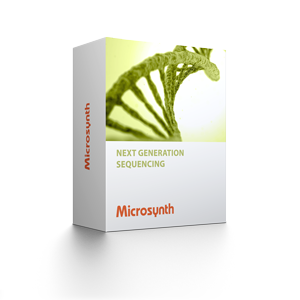
Back to top
Small and microRNA Sequencing

Unlock the regulatory landscape of non-coding RNA
Our small RNA sequencing service enables you to investigate post-transcriptional regulation, discover novel small RNAs, and identify condition-specific biomarkers. Whether you're working in basic research or drug development, this service adds a vital layer of insight beyond traditional RNA-seq.
Our small RNA sequencing service enables you to investigate post-transcriptional regulation, discover novel small RNAs, and identify condition-specific biomarkers. Whether you're working in basic research or drug development, this service adds a vital layer of insight beyond traditional RNA-seq.
What You Can Achieve
- Reveal the regulatory impact of miRNA, piRNA, and other small RNAs
- Identify novel small RNA species and expression profiles
- Detect biomarkers under specific physiological or disease conditions
- Uncover gene regulation in functional or therapeutic studies
- Support drug discovery and target validation
- Complement your omics data with non-coding RNA insights
Before You Start
We support you from experimental design to analysis. Key questions to clarify:
- What small RNA types and size ranges are expected (known vs. novel)?
- Which sample types are used (e.g., serum, cells, tissues, organisms)?
- What sequencing depth and number of replicates are needed for reliable insights?
- Is your organism well annotated, or will de novo discovery be needed?
- Are reference miRNA/piRNA databases available and applicable?
Modular Workflow
Outsource the entire workflow—or select specific modules. Our process is designed for flexibility. Typical workflow steps include:
Bioinformatic Analysis
Our standard pipeline delivers both depth and clarity, including:
- Data QC & filtering: Raw data quality control, read trimming, and length filtering
- Mapping & quantification: Alignment to reference genomes and RNA databases
- Classification: Categorization of known small RNA classes (e.g., miRNA, piRNA, snoRNA)
- Novel discovery: Prediction of new small RNA candidates
- Expression analysis: Differential expression across conditions or treatments
- Target gene annotation: Prediction and functional analysis (GO and KEGG enrichment)
- Motif analysis: Detection of sequence motifs in novel miRNAs
You receive raw files, normalized data, and publication-ready summaries.
Turnaround Time
- 25 working days for library preparation and sequencing
- +10 working days for standard bioinformatics
- Express service available upon request
Sample Requirements
- Buffer recommendation: 10 mM Tris-HCl (pH 7.0)
- Important: Avoid any buffers containing EDTA >1mM
- RNA quantification: Use fluorometric methods (e.g., PicoGreen®, Qubit®)
Minimum Input for Illumina Sequencing:
| Library Type | Amount (µg) | Concentration (ng/µl) |
| Small RNA / miRNA (total RNA) | >1.0 | >20 |


